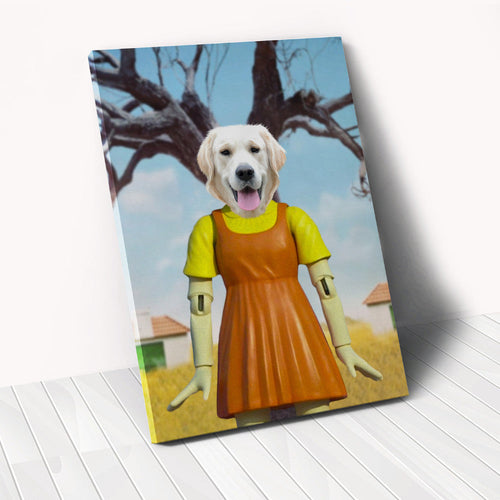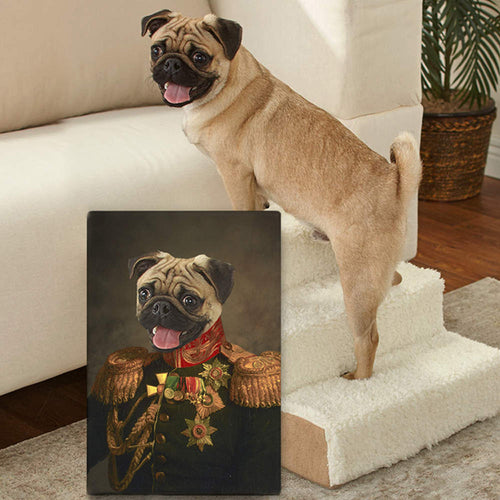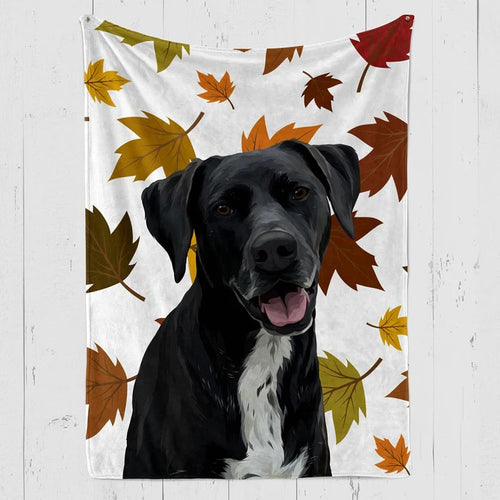
In the initial weeks of bringing the furry pal home, it is important to set up the expectations and proper behavior of the pooch, and it commences with basic obedience dog training sessions. Basic obedience dog training not only facilitates the dog’s safety but also helps in keeping the dog physically and mentally fit and improves the dog and owner relationship. Further, it becomes easier for the pet owner to prevent their furry companion from acting out.
Besides, it helps to make the dog aware of basic commands, socialization, and behavior. The obedience training is integral in curbing the destructive behavior of the pooches by keeping them mentally stimulated. If you want to know all the aspects of how to train your dog, then refer to the section below.
Considerations Involved in Obedience Training for Dogs
Here are some of the important considerations that you must analyze before starting with the basic obedience training of your dog:
Home training or group training
Considering the training type that your furry pal needs. Both home training and group training have a particular set of benefits. While home training will make it easy for both the pet owners and pooch to focus on each other, group class training, on the other hand, enables the dog to get 100% personalized attention and learn how to focus despite deviations.
The major benefit of home training is that the trainer can focus on the parameters that pet owners want their pooch to learn. In-home training, there is a scope to expand the training service if required. While group training is better for socialization and is more affordable.
Selecting the right instructor
Be it basic obedience training or advanced training, it is important to choose the right trainer. Even if you have experience in handling a canine companion, a professional trainer will help you get rid of probable issues that you can face while training your dog. However, before choosing a trainer, it is vital to cross-check the potential of the trainer before trusting them with your furry baby.
Assess their training philosophy. Settle for a trainer who opts for positive reinforcement training. Rewarding the pooch and teaching the right behavior with proper training will strengthen the bond between a dog owner and the dog. Besides analyzing their experience, check about their education, methodology that they use, reputation, and more.
Obedience training classes and equipment
There are varied obedience training classes available for the pooches. You have to understand the requirements of your furry pal and choose a class accordingly. Many training schools have a series of classes for puppies that are only eight weeks old. You can also opt for dog sport classes or advanced obedience classes whichever suits you.
Besides choosing the right class, you must also have the proper training equipment at your disposal. In basic obedience training sessions, you generally need a standard five or six-foot leash, flat buckle, body harnesses, collars, etc.
Type of Obedience Training Classes
There are predominantly two methods involved in training a dog.
Aversive-based method
The aversive dog training method refers to the training process where the trainer uses positive punishment or negative reinforcement and changes the behavior of the dog. It can include scolding the pooch after they tried disobeying the commands, using a prong collar to stop them from pulling the leash, etc. This training method proves effective for dogs that have major behavioral concerns. However, this training may have a long-term negative impact on the behavior of the dog.
In simple words, suppressing the natural behavior of a dog does not mean that the dog will not get back to that behavior again. It is seen that dogs that are trained using positive reinforcements have fewer behavioral issues. Aversive training methods can lead to increased aggression of the pooch towards the owner. Moreover, this training method is not suitable for breeds that have behavioral concerns and temperament issues.
Reward-based training method
As the name suggests, the reward-based training method involves teaching the pooch to adopt the behaviors the owners like through reward. After a point, the dog will understand what they are being rewarded for. It is the most effective and kindest training method. This training method, referred to as positive reinforcement is enjoyable and strengthens the bond between the dog and the owner or the handler.
The rewards come in varied forms. For instance, you can give them food treats or their favorite chewy toy to acknowledge their effort. On the other hand, you can shower them with verbal praise whenever they exhibit good behavior and listen to a command. Through this training, the behavioral issues of the dog can also be curbed. Dog owners can ignore their ‘unwanted’ behaviors by not giving them treats. If the dog is not rewarded, it is seen that the pooch tends to stop exhibiting the unwanted behavior. Also, the furry baby gets better at learning with rewards.
Recognizing Common Dog Training Problem
Different dog breeds behave in a certain way and respond to unique triggers. You will see common behavioral issues in dogs like excessive digging, jumping, barking, etc.
Be consistent and remain positive.
It is very important to be consistent with the training process. Leaving the training halfway will not be good for the overall development of the pooch. It is very common to see the dog behaving impulsively during training and trainers are likely to become reactive. You can sail through this period only by implementing positive reinforcement. Moreover, it is essential to incorporate training tasks into the daily routine. Obedience training can start with normal feeding habits, confining (baby gates, and crate training), etc.
Make sure to treat them
Instead of punishing the pooch or scolding them, you can give them their favorite treat and prompt them to follow the command. Rewarding the pooches whenever they comply with the following commands will help them successfully pass the obedience training.
Limit the exposure to the stimuli
Exposing the puppy repeatedly to the stimuli will result in behavioral problems. It is wise to ensure control over excess access to stimuli which prompts the pooches to behave in an undesirable way. It is better for them to keep the pooches away from the stimuli till they can take the responsibility on their own. Though taking the pooches outside will prevent them from getting bored, this leads to over-stimulation which stresses the puppy, prompting them to behave negatively.

Frequently Asked Questions
What is the primary benefit of fundamental obedience training for dogs?
The key advantage of basic obedience training lies in fostering socialization and ensuring a secure, healthy life, while also nurturing an ideal bond between the pet and its owner.
When is the appropriate time to initiate obedience training for my canine companion?
Commencing basic obedience training is advisable at the age of 7 weeks. It's essential not to delay formal training, as puppies are highly receptive to learning during their early stages, making this period crucial for their development.
Which fundamental commands are typically taught in obedience training sessions?
Basic commands covered in obedience training sessions include come, stay, sit, play, lay down, quiet, find, hi-five, jump, fetch, and more.
How long should I continue basic training sessions for my dog?
Basic training sessions can be continued until your dog reaches one year of age, although training can and should be ongoing throughout their life for reinforcement and mental stimulation.
Is it possible to conduct basic obedience training for my dog without professional assistance?
Certainly, dog owners can conduct basic obedience training themselves. However, first-time dog owners might find it beneficial to enlist a professional trainer for guidance and support.
What common challenges might arise during obedience training, and how can these challenges be tackled?
Challenges such as excessive barking, sensitivity, stubbornness, reactivity to other animals, or enthusiastic jumping can be overcome with patience, consistency, and positive reinforcement. Rewarding your pet for good behavior is crucial.
Are there training methods besides positive reinforcement for obedience training?
Indeed, apart from positive reinforcement, other effective methods include clicker training, science-based training, and classical conditioning.
What should I do if my dog does not respond well to obedience training?
If your dog is unresponsive to training, consider altering the training approach to make it more enjoyable. Incorporate treats and focus on building trust to enhance your dog's receptivity to training.
Do different dog breeds respond differently to various obedience training techniques?
Yes, training techniques vary based on the temperament and personality of different dog breeds. Tailoring the approach to suit their specific traits ensures more effective training outcomes.
Conclusion
Obedience training is imperative in the all-round development of a dog. You have to slowly incorporate the training process as an everyday routine. The process is never a huge time commitment but it involves a lot of patience. Successful training is indeed rewarding for the dog owner. Obedience training is important for all dogs, especially those who are high-energy breeds. It is very important for them to undergo physical exercises and mental stimulation.
Reference Links:
- https://www.webmd.com/pets/dogs/dog-training-obedience-training-for-dogs
- https://www.rover.com/blog/dog-training-101/
- https://www.rspca.org.uk/adviceandwelfare/pets/dogs/training
- https://www.thesprucepets.com/steps-to-train-your-dog-1118273
- https://www.akc.org/expert-advice/training/basic-obedience-training-for-your-dog/
Similar Articles
Latest Review on Woof Blankets
To have such a masterpiece by my side every day is a gift for me and my memories with Rex. Thank you WoofBlankets for such an opportunity to recreate his image on a blanket.Lara o’ Miguel US, California

COLLECTION WORTH EVERY PENNY
BEST SELLERS
-
Woofy Single Color Custom Pet Blanket
![Woofy Single Custom Pet Blanket – Woof Blanket]()
- -41%
BlanketsSHOP NOW- Regular price
- from $64.95
- Sale price
- from $64.95
- Regular price
-
$109.95 - Unit price
- per
Sold out -
Exclusive Christmas Custom Pet Blanket
![Exclusive Custom Pet Blanket]()
- -39%
BlanketsSHOP NOW- Regular price
- from $69.95
- Sale price
- from $69.95
- Regular price
-
$114.95 - Unit price
- per
Sold out -
Christmas Custom Pet Blanket
![Christmas Custom Pet Blanket - Custom Dog Blankets]()
- -40%
BlanketsSHOP NOW- Regular price
- from $69.95
- Sale price
- from $69.95
- Regular price
-
$115.95 - Unit price
- per
Sold out -
Watercolor Pet Portraits
![]() SHOP NOW
SHOP NOW- Regular price
- from $59.95
- Sale price
- from $59.95
- Regular price
-
- Unit price
- per
Sold out -
Woofy Christmas Custom Dog Blanket
![Woofy Christmas Custom Dog Blanket]()
- -39%
BlanketsSHOP NOW- Regular price
- from $69.95
- Sale price
- from $69.95
- Regular price
-
$114.95 - Unit price
- per
Sold out -
Modern Pet Owner Portrait
![]()
- -32%
CanvasSHOP NOW- Regular price
- from $84.95
- Sale price
- from $84.95
- Regular price
-
$124.95 - Unit price
- per
Sold out -
Woof Splash Custom Pet Blanket
![Woof Splash Custom Pet Blanket]()
- -39%
BlanketsSHOP NOW- Regular price
- from $69.95
- Sale price
- from $69.95
- Regular price
-
$114.95 - Unit price
- per
Sold out -
The Admiral - Custom Pet Portrait
![The Admiral - Custom Pet Portrait Online]()
- NEW
- -25%
CanvasSHOP NOW- Regular price
- from $59.95
- Sale price
- from $59.95
- Regular price
-
$79.95 - Unit price
- per
Sold out -
Wings of Loyalty - Custom Pet Portrait
![]()
- NEW
CanvasSHOP NOW- Regular price
- from $59.95
- Sale price
- from $59.95
- Regular price
-
- Unit price
- per
Sold out -
Pet Memorial Custom Photo Collage Blanket
![Personalized pet memorial quilt with photos]()
- -41%
BlanketsSHOP NOW- Regular price
- from $64.95
- Sale price
- from $64.95
- Regular price
-
$109.95 - Unit price
- per
Sold out -
Celestial Paws - Custom Pet Portrait
![]() CanvasSHOP NOW
CanvasSHOP NOW- Regular price
- from $59.95
- Sale price
- from $59.95
- Regular price
-
- Unit price
- per
Sold out -
The Loyal Soul - Custom Pet Portrait
![]()
- NEW
SHOP NOW- Regular price
- from $59.95
- Sale price
- from $59.95
- Regular price
-
- Unit price
- per
Sold out -
Cartoonized Pet Portraits (New)
![Cartoonized Pet Custom Portraits Online]()
- -36%
SHOP NOW- Regular price
- from $59.95
- Sale price
- from $59.95
- Regular price
-
$93.95 - Unit price
- per
Sold out -
The French Sailor - Custom Pet Portrait
![]()
- -25%
CanvasSHOP NOW- Regular price
- from $59.95
- Sale price
- from $59.95
- Regular price
-
$79.95 - Unit price
- per
Sold out -
The Policeman - Custom Pet Portrait
![]()
- NEW
- -25%
CanvasSHOP NOW- Regular price
- from $59.95
- Sale price
- from $59.95
- Regular price
-
$79.95 - Unit price
- per
Sold out -
The General - Custom Pet Portrait
![]()
- NEW
- -25%
CanvasSHOP NOW- Regular price
- from $59.95
- Sale price
- from $59.95
- Regular price
-
$79.95 - Unit price
- per
Sold out -
Woof Love Custom Pet Blanket
![Woof Love Custom Pet Blanket]()
- -39%
BlanketsSHOP NOW- Regular price
- from $69.95
- Sale price
- from $69.95
- Regular price
-
$114.95 - Unit price
- per
Sold out -
Summer Time Custom Pet Blanket
![Summer Time Custom Pet Blanket]()
- -39%
BlanketsSHOP NOW- Regular price
- from $69.95
- Sale price
- from $69.95
- Regular price
-
$114.95 - Unit price
- per
Sold out -
The Ambassador - Custom Pet Portrait
![The Ambassador - Custom Pet Portrait Online]()
- NEW
- -25%
CanvasSHOP NOW- Regular price
- from $59.95
- Sale price
- from $59.95
- Regular price
-
$79.95 - Unit price
- per
Sold out -
Fall In Love Custom Pet Blanket
![Fall In Love Custom Dog Blanket]()
- NEW
- -39%
BlanketsSHOP NOW- Regular price
- from $69.95
- Sale price
- from $69.95
- Regular price
-
$114.95 - Unit price
- per
Sold out -
The Classy Lady - Custom Pet Portrait
![The Classy Lady]()
- NEW
- -25%
CanvasSHOP NOW- Regular price
- from $59.95
- Sale price
- from $59.95
- Regular price
-
$79.95 - Unit price
- per
Sold out -
The Duke - Custom Pet Portrait
![The Duke - Custom Pet Portrait]()
- NEW
- -25%
CanvasSHOP NOW- Regular price
- from $59.95
- Sale price
- from $59.95
- Regular price
-
$79.95 - Unit price
- per
Sold out -
Dog In Suit- Custom Pet Portrait
![Dash Dog In Suit- Custom Pet Portrait Online]()
- NEW
- -25%
CanvasSHOP NOW- Regular price
- from $59.95
- Sale price
- from $59.95
- Regular price
-
$79.95 - Unit price
- per
Sold out -
The Princess - Custom Pet Portrait
![]()
- NEW
- -25%
CanvasSHOP NOW- Regular price
- from $59.95
- Sale price
- from $59.95
- Regular price
-
$79.95 - Unit price
- per
Sold out -
Modern Pet Portrait with One Mug
![Modern Pet Portrait with One Mug]()
- -25%
Print MaterialSHOP NOW- Regular price
- from $99.95
- Sale price
- from $99.95
- Regular price
-
$133.95 - Unit price
- per
Sold out -
The Aristocrat - Custom Pet Portrait
![The Aristocrat - Custom Pet Portrait At Best Price]()
- NEW
- -25%
CanvasSHOP NOW- Regular price
- from $59.95
- Sale price
- from $59.95
- Regular price
-
$79.95 - Unit price
- per
Sold out -
Single Color Custom Blanket with 1 Mug
![Single Color Custom Blanket with 1 Mug]() BlanketsSHOP NOW
BlanketsSHOP NOW- Regular price
- from $99.95
- Sale price
- from $99.95
- Regular price
-
- Unit price
- per
Sold out -
Single Color Custom Blanket with 2 Pillows
![Single Color Custom Pet Blanket with 2 Pillows]()
- -21%
BlanketsSHOP NOW- Regular price
- from $99.95
- Sale price
- from $99.95
- Regular price
-
$125.95 - Unit price
- per
Sold out -
The Dog in Suit Custom Pet Mug
![]()
- -20%
MugsSHOP NOW- Regular price
- $39.95
- Sale price
- $39.95
- Regular price
-
$49.95 - Unit price
- per
Sold out -
Angel Custom Pet Mug
![]()
- -20%
MugsSHOP NOW- Regular price
- $39.95
- Sale price
- $39.95
- Regular price
-
$49.95 - Unit price
- per
Sold out -
This Human Belongs To - Custom Pet Mug
![]()
- NEW
- -20%
MugsSHOP NOW- Regular price
- $39.95
- Sale price
- $39.95
- Regular price
-
$49.95 - Unit price
- per
Sold out -
It's Not Dog Hair Custom Pet Mug
![]()
- NEW
- -20%
MugsSHOP NOW- Regular price
- $39.95
- Sale price
- $39.95
- Regular price
-
$49.95 - Unit price
- per
Sold out -
My Dog Is My Valentine Custom Pet Mug
![]()
- NEW
- -20%
MugsSHOP NOW- Regular price
- $39.95
- Sale price
- $39.95
- Regular price
-
$49.95 - Unit price
- per
Sold out -
3 Photos With Message Custom Pet Mug
![]()
- NEW
- -20%
MugsSHOP NOW- Regular price
- $39.95
- Sale price
- $39.95
- Regular price
-
$49.95 - Unit price
- per
Sold out -
My Valentine Has Four Legs- Personalized Mugs
![]()
- NEW
- -20%
MugsSHOP NOW- Regular price
- $39.95
- Sale price
- $39.95
- Regular price
-
$49.95 - Unit price
- per
Sold out -
Dog Mamma Custom Pet Coffee Mug
![]()
- -20%
MugsSHOP NOW- Regular price
- $39.95
- Sale price
- $39.95
- Regular price
-
$49.95 - Unit price
- per
Sold out -
Uncle Sam - Custom Pet Portrait
![]()
- NEW
- -25%
CanvasSHOP NOW- Regular price
- from $59.95
- Sale price
- from $59.95
- Regular price
-
$79.95 - Unit price
- per
Sold out -
The Revolutionary Emperor - Custom Pet Portrait
![]()
- NEW
- -25%
CanvasSHOP NOW- Regular price
- from $59.95
- Sale price
- from $59.95
- Regular price
-
$79.95 - Unit price
- per
Sold out -
The Princess Paws - Custom Pet Portrait
![]()
- -25%
CanvasSHOP NOW- Regular price
- from $59.95
- Sale price
- from $59.95
- Regular price
-
$79.95 - Unit price
- per
Sold out -
The Dark Crusader Knight - Custom Pet Portrait
![]()
- -25%
CanvasSHOP NOW- Regular price
- from $59.95
- Sale price
- from $59.95
- Regular price
-
$79.95 - Unit price
- per
Sold out































































